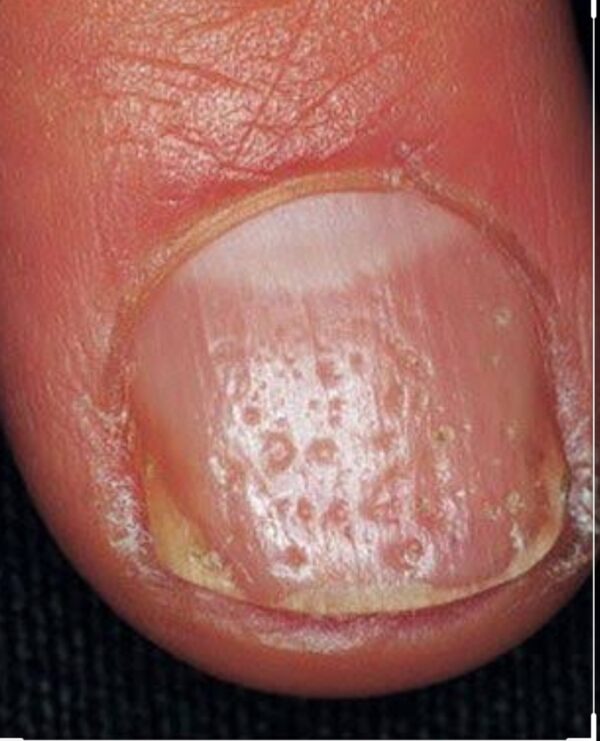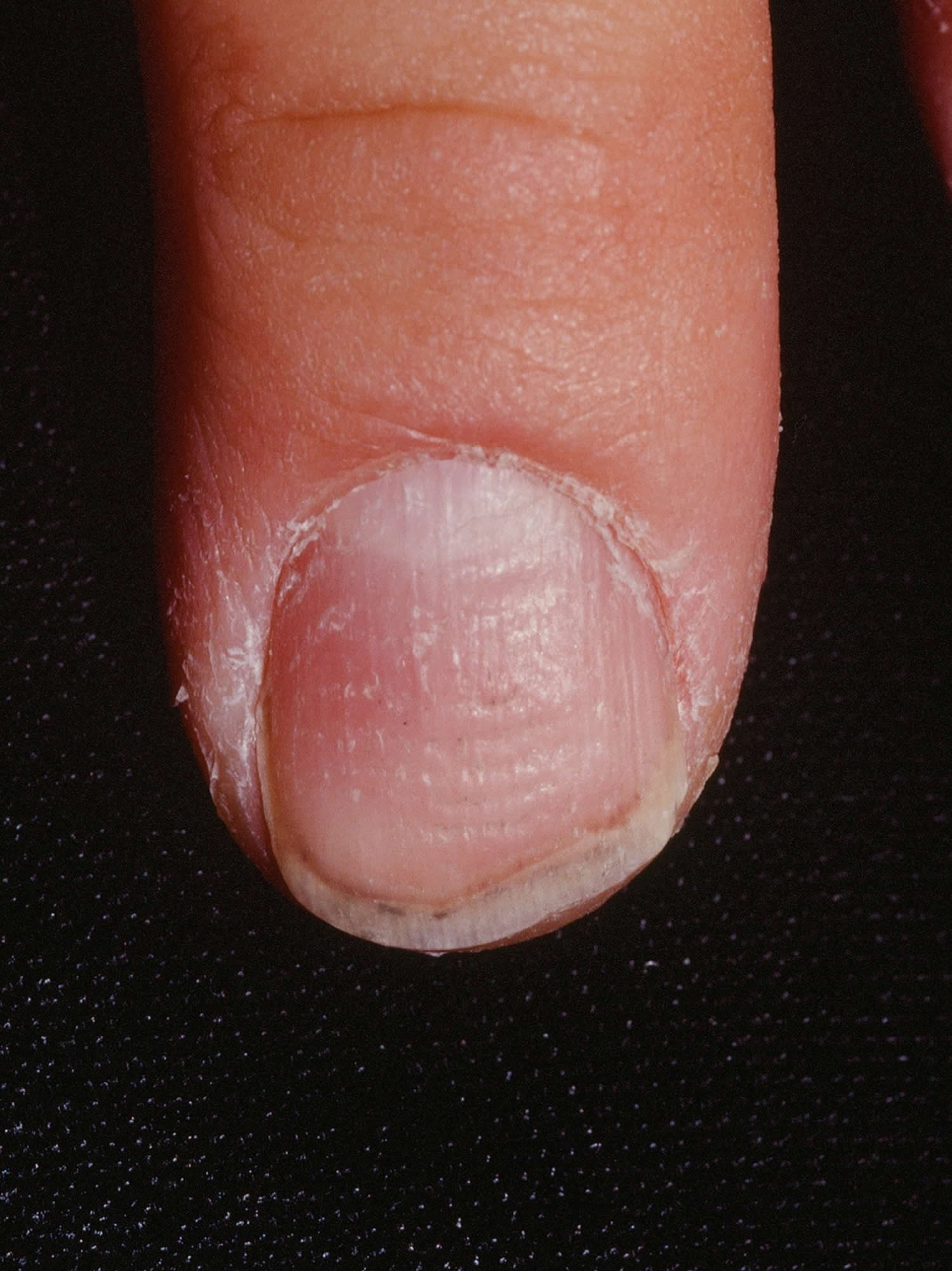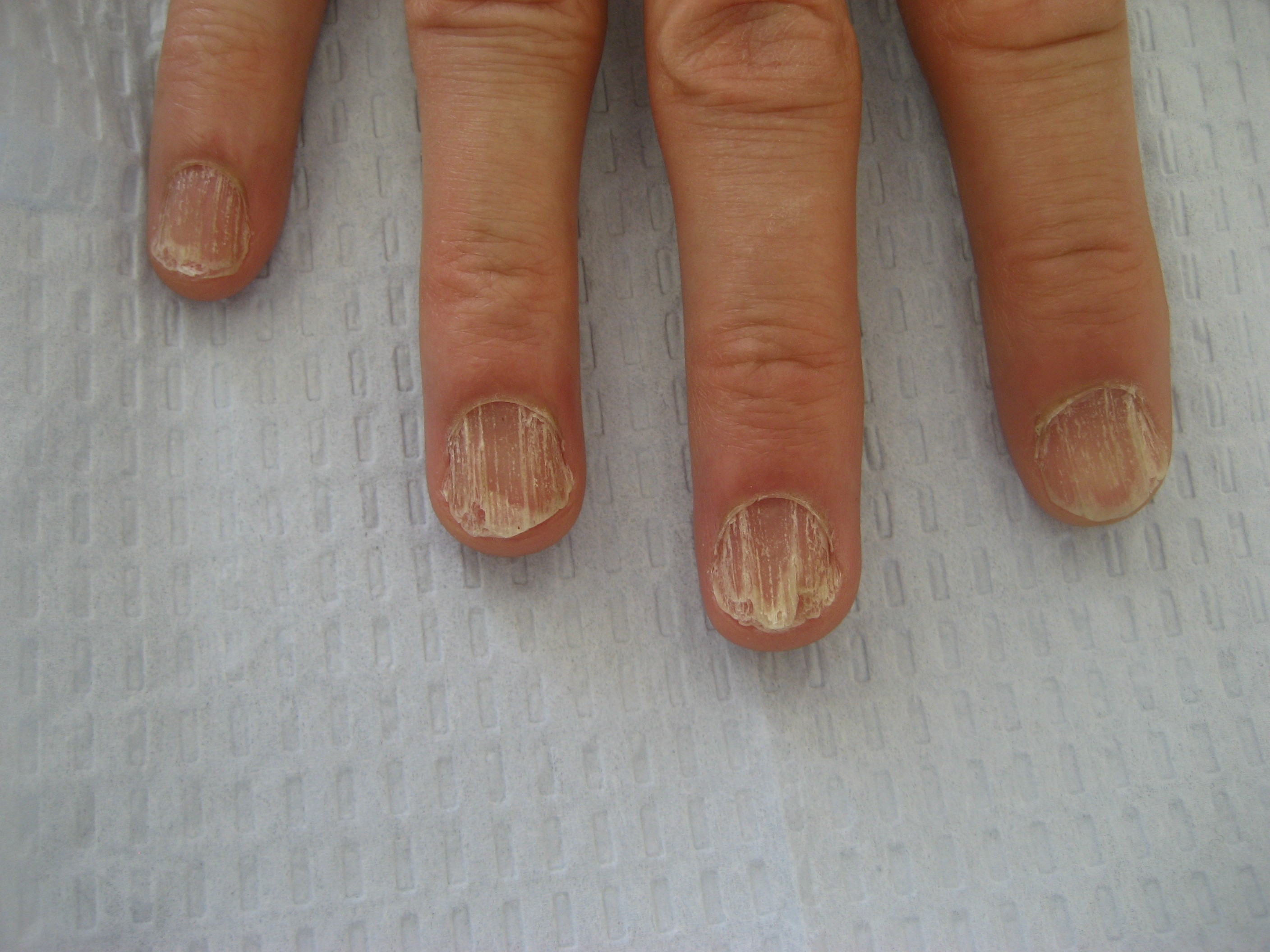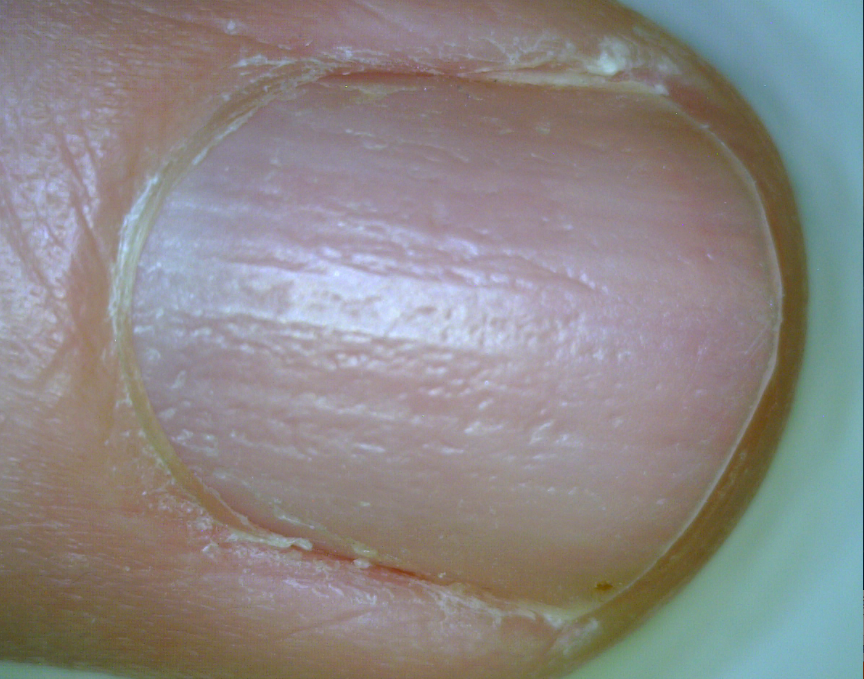
Under the Microscope Alopecia Areata Wellness NAILS Magazine
Alopecia areata is an autoimmune disease that causes patchy hair loss anywhere on your body, but it most commonly affects the hair on the skin that covers your head (scalp). "Alopecia" is a medical term for hair loss or baldness, and "areata" means that it occurs in small, random areas. There are many different classifications of alopecia areata.

Let’s talk about alopecia areata….. Skinandall
Alopecia areata is a chronic, immune-mediated condition affecting hair follicles, nails, and, occasionally, the retinal pigment epithelium. [1] This condition results from the immune system mistakenly attacking hair follicles, leading to hair loss without permanent damage to the follicles.

Alopecia Areata Clinical Characteristics of Those With and Without Poliosis Dermatology Advisor
DISCUSSIONS Alopecia causes pitting, splitting, lines, spots or other changes to the nails. Learn the best treatment for the effects of alopecia on nails.

Alopecia Universalis Nails Nail Ftempo
Alopecia areata is an autoimmune condition that causes the immune system to become overactive and attack hair follicles. The condition can run in families.. You may also have an itching sensation, or notice pitting of the fingernails. In unusual cases, alopecia areata can lead to total hair loss on the scalp or the entire body.

Alopecia areata
"Alopecia areata totalis" is the term used for a total loss of hair on the scalp. "Alopecia areata universalis" refers to complete loss of hair on the scalp and body, including lashes, brows, beards, and, in some cases, even the thin, protective coat of hair over the whole body.

Alopecia areata causes, symptoms and best treatment for alopecia areata
How long you've had hair loss Where you've lost hair Your age (children can require different treatment) Based on these and other considerations, here's what a treatment plan may look like: One or two bald spots that have been there for less than one year: Your dermatologist may recommend a wait-and-see approach.

Alopecia areata Journal of the American Academy of Dermatology
Alopecia areata is an autoimmune condition that causes hair to fall out in round patches. Learn about its symptoms, causes, and treatment.. Hair & Nails; Everything You Need to Know About.

Alopecia universalis with twentynail dystrophy (trachyonychia)
Alopecia areata can also affect the fingernails and toenails, and sometimes these changes are the first sign that the condition is developing. There are a number of small changes that can occur to.

(PDF) Remarkable Improvement of Nail Changes in Alopecia Areata Universalis with 10 Months of
Alopecia areata is an autoimmune condition affecting hair follicles causing hair loss. It typically presents with discrete bald patches on the scalp but can cause hair loss from all hair-bearing areas on the body. Alopecia is a Latin term meaning hair loss, and areata refers to the patchy nature of the hair loss.

Alopecia Universalis Nails Nail Ftempo
Alopecia areata (AA) is a chronic, autoimmune disease and while most associate it with temporary and permanent hair loss, it affects the nails in up to 46% of those affected. AA nails may appear pitted with lines, having splitting and/or white spots.

a. White patches arround fingernails. b. Alopecia areata of the scalp. Download Scientific Diagram
Nail changes are a common feature of alopecia areata (AA) and are a significant source of cosmetic disfigurement and functional impairment. This review provides an update of the prevalence, clinical and histopathological features, pathogenesis, differential diagnosis, clinical course, prognosis, and.

Onychomadesis (proximale loslating van de nagel)
Stippling or pitting (rows of tiny dents) on the fingernails. There can also be trachyonychia, rough ridges going lengthwise down the nails. These nail changes can cause pain. Although more commonly associated with severe alopecia areata, up to 30% of all people with alopecia areata have nail changes.

Alopecia areata (pleksgewijze kaalheid)
Prof. Dr. Trautinger, St. Pölten The lifetime incidence of AA is 2 %, affecting both sexes equally and being more prevalent in children than in adults. In 40 % of patients, the first AA manifestation occurs by age 20 years, and in 83-88 % by age 40 years. Collapse of the HF bulb IP plays a critical role in the pathophysiology of AA.

Alopecia Areata Autoimmune Alopecia... Academic Dermatology of Nevada
A 54-year-old man was referred to our nail clinic with ridging of his fingernails. He was diagnosed with alopecia areata (AA) one year prior to the nail changes. His hair loss progressed rapidly, with loss of all scalp, facial and body year within a month.

Nail Pitting in Individuals with Alopecia Areata — Donovan Hair Clinic
Treatment of alopecia areata-associated onychodystrophy may be equally, less, or more important to the patient, as treatment of hair loss and therapeutic options should be discussed. In children with alopecia areata-associated nail changes, nails may improve spontaneously and observation may be appropriate.

Advances in Alopecia Areata Diagnosis
CASE PRESENTATION A 25-year-old female patient presented with a four-month history of hair loss affecting mainly the frontal region. Hair loss was associated with dystrophy of all fingernails and toenails. There was no family history of nail changes, hemochromatosis, or hemoglobinopathy.